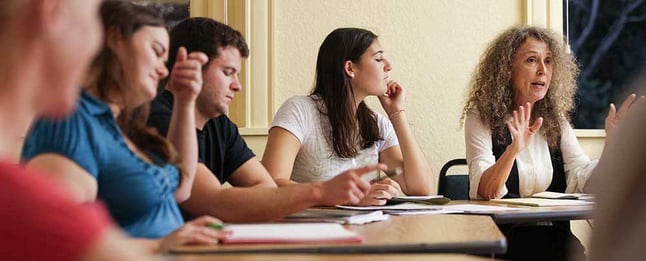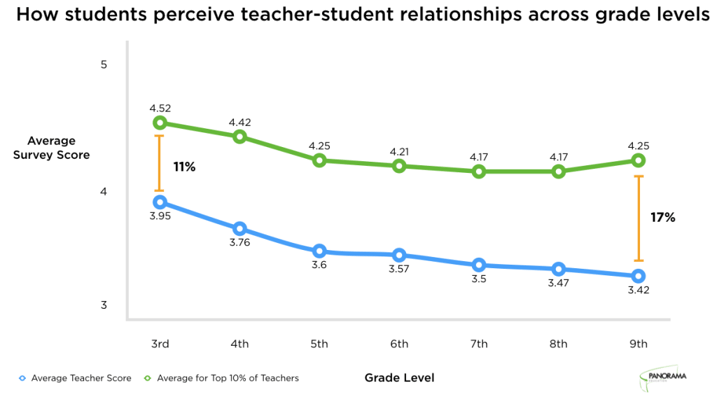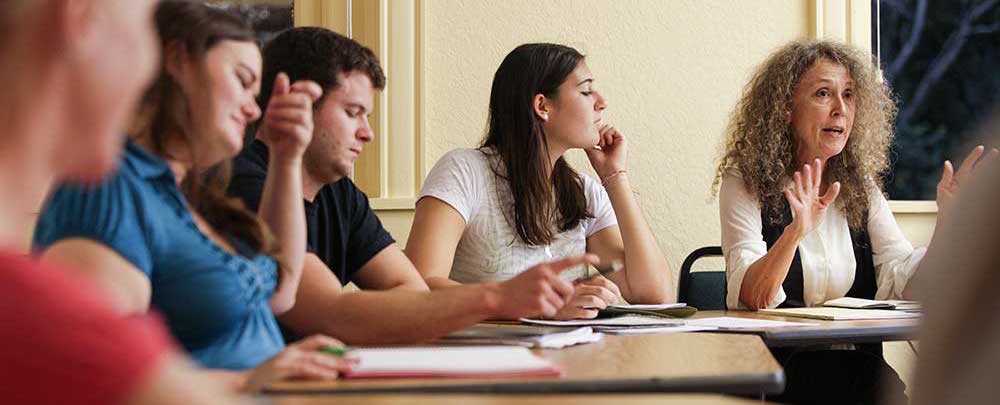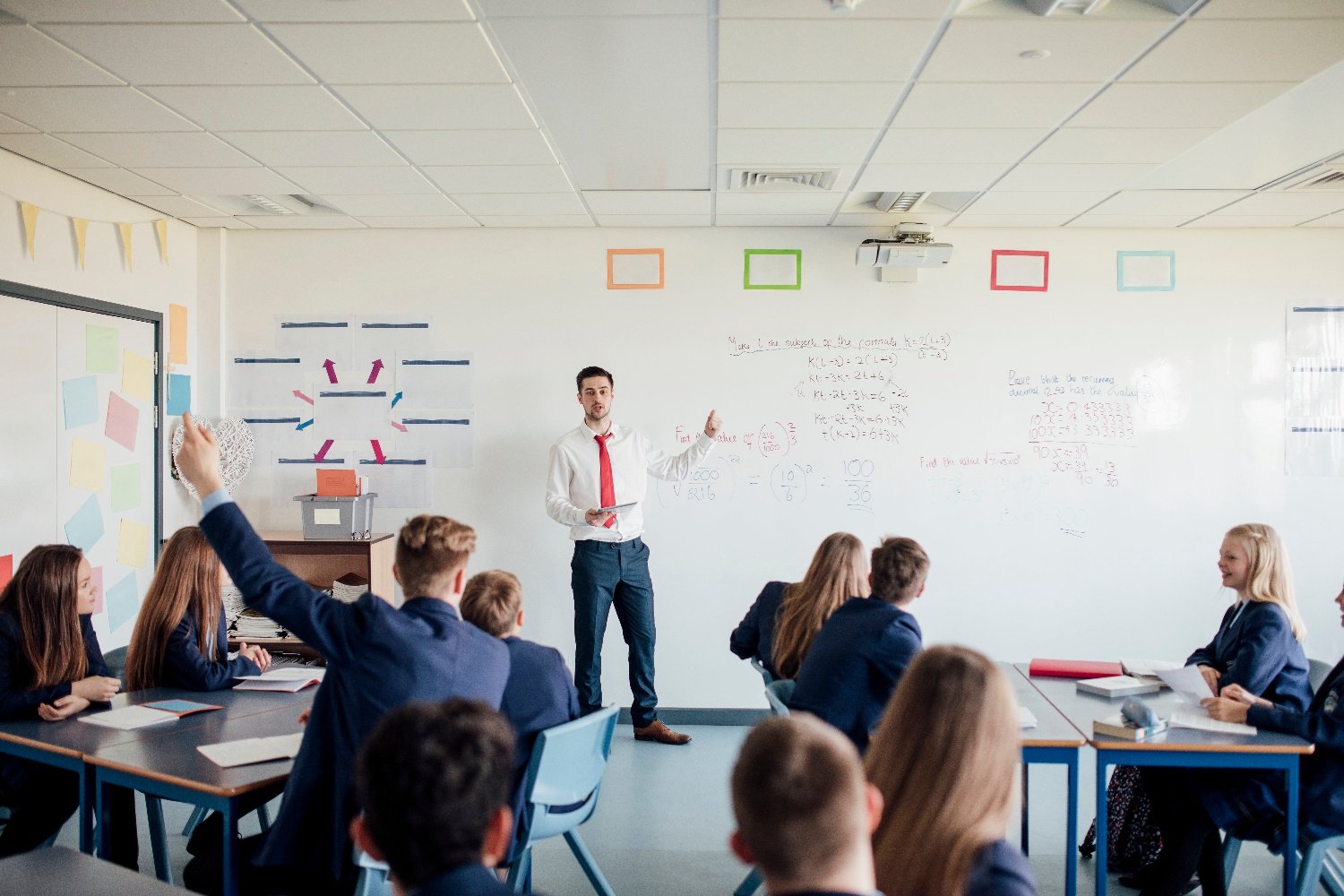The social connections between teachers and students are critical for success inside and outside of the classroom. Over the last year and a half, we’ve collected hundreds of thousands of student survey responses to questions about students' relationships with their teachers.
In this post, we present our first set of findings on teacher-student relationships. This analysis points to patterns in how students’ perceptions of their relationships with their teachers change across grade level, and how some exceptionally strong teachers manage to create and maintain strong bonds with their students.
Why teacher-student relationships matter
Education research consistently shows that positive teacher-student relationships are an important dimension of effective teaching and contribute to students’ success in school and life. Students who have strong relationships with their teachers tend to get better grades, work harder in school, and are less likely to drop out (Gehlbach et. al. in press; Wentzel 1998).
By analyzing survey responses from the Panorama Student Survey about students’ perceptions of their relationships with their teachers, we’ve found that some teachers are especially well-equipped to develop relationships with students and these ratings change across grade level.

The dataset we’ve investigated includes 14 districts, 407 schools, 11,203 teachers, and 301,418 students from 10 states. Students in grades 3 through 12 responded to several questions about teacher-student relationships, which included:
- How respectful is this teacher towards you?
- If you walked into class upset, how concerned would your teacher be?
- If you came back to visit class three years from now, how excited would this teacher be to see you?
- When your teacher asks how you are doing, how often do you feel that your teacher is really interested in your answer?
- How excited would you be to have this teacher again?
On average, students in the dataset rate their relationships with teachers 3.6 on a scale of 1 (low) to 5 (high), though there is a great deal of variation. We decided to look closely at teachers rated in the top 10% by their students to better understand what we can learn about developing positive teacher-student relationships.
Learning from top teachers
Our analysis suggests that some teachers do much better than others at building strong relationships with students. In general, students’ perceptions of the strength of their relationships with teachers tend to decrease (overall, the effect of grade level is a 0.9% reduction in how students see their teachers) through elementary and middle school. Third grade students record an average score of 3.95, while ninth grade students record an average score of 3.42. This corresponds to a 10% drop in the average teacher-student relationships score from third to ninth grade. There is a slight uptick in students’ ratings of teacher-student relationships again in the high school years.

The average score for the top 10% of teachers, however, presents a different story. As the grade level increases, the average score for top teachers loses less ground than the overall average. The teacher-student relationship score for the top 10% of teachers decreases from 4.52 in third grade to 4.25 in ninth grade, which is only a 5% decline across those grade levels—half of the national average.
This means that the gap between the average and top 10% survey scores on teacher-student relationships is 11% in third grade and 17% in ninth grade. While students’ perceptions of teacher-student relationships decrease through these years, the drop for the those teachers in the top 10% is much less pronounced.
What this means for educators
After conducting this preliminary analysis on student survey data, we found that the teachers who seem especially well-equipped to develop and sustain strong relationships with students during the middle school years and the transition to high school are well-distributed. These teachers work at different schools and with many different communities of students.
This suggests that teachers working with different student populations are all capable of building strong relationships with students. It appears that the impact of forming strong teacher-student relationships are not restricted to particular student populations: all kinds of teachers can be successful at building relationships with all kinds of students.
As we continue to analyze student perception data to learn more about improving teaching and learning in schools and classrooms, we will continue to share our findings with the community.
References
Gehlbach, H., Brinkworth, M. E., Hsu, L., King, A., McIntyre, J., & Rogers, T. (in press). Creating birds of similar feathers: Leveraging similarity to improve teacher-student relationships and academic achievement. Journal of Educational Psychology.
Wentzel, K. R. (1998). Social relationships and motivation in middle school. Journal of Educational Psychology.
This post was written in collaboration with Won Suh, Data Scientist at Panorama Education, and Hunter Gehlbach, Ph.D., Research Director at Panorama Education.







